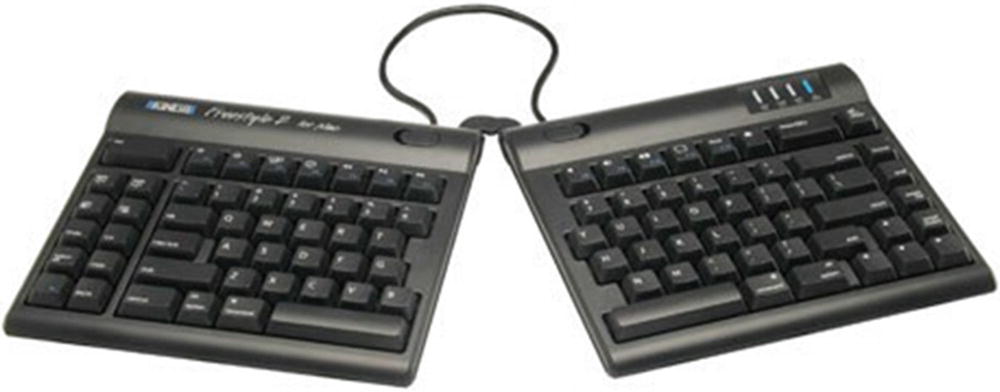
Writing is fun, creative, and brings a lot of value to other people. But most people can’t write a blog post, let alone a 30,000-word book. I think it’s because writing is a habit, and it works just like a muscle that we need to train constantly.
Researching the topic: Before starting any writing, you need to validate a topic as market-viable.
Technical book categories: Some examples.
Testing your topic: Validating your concept.
Writing the manuscript: The art of writing.
Markdown for the win: The productive way to write.
Health considerations: Ergonomics, eating, fitness, and pacing yourself.
Exercise
![]()
Go to this Amazon.com search result page1, pick a book on writing exercises, and read reviews.
Researching the Topic
- 1.
New topic: Pick a relatively new technology (e.g., React.js) that is hot right now and wait until it becomes—if it becomes—mainstream.
- 2.
Better book: Pick a mainstream topic (e.g., JavaScript) that is already hugely popular, research the best sellers’ flaws, address them, and make a better book.
It’s a good idea to have a few topics in mind. Now, let’s discuss the research to support or disprove your topics.
Needless to say, good writers are readers. In writing, your first move (after settling on some topics that are of the most interest to you) should be reading or at least skimming most of the best competitors’ books. They are the best books on your topics, or related topics, if yours is too new.
Just go to Amazon.com and type the term, for example, “nodejs.” On the first page, you’ll see the best books according to ASE (Amazon Search Engine) related to this search term.
Look at and use Tables of Contents for your research, for free.
Use Kindle versions, because many Kindle books are less expensive than print books, and there are apps for virtually any device/platform/OS, so the Kindle device itself is not necessary.
Go to the library and check out the books for free; however, this might not work with cutting-edge topics or small niche topics.
Ask your supervisor to expense the books: I never received a rejection when asking for such things.
Sign up for a Safari subscription—the Netflix of programming books.
Tip
![]()
To avoid spending too much time on research and reading, I highly recommend taking a speed reading class like Iris2.
While you’re on Amazon.com, browse through categories and open the books’ first pages. Note their global rank. This is how popular the book is among other books on Amazon.com. Typically, the 100,000s and above is mediocre, the 10,000 to 100,000 range is good, and the first 10,000 is amazing! If you see that none of the top books in the category are in the first 10,000, that may mean the category and topic are not in such high demand.
Often books are placed in not-so-fitting Amazon.com categories, so be careful when comparing. This is done to push a book to be a best seller in a more obscure category rather than compete in a crowded but more fitting one. For example, Pro Angular 3 is #5,526 in Books and #4 in Network Programming but is not even listed in JavaScript, and it is a book on a JavaScript framework. Same with the longtime best seller in XML Programming Node.js in Action 4, which has very little to do with XML and a lot to do with JavaScript. Its rank is #10,487 in Books. In Chapter 5’s “How to Improve Amazon Sales,” I’ll go into more detail about this.

Google Trends compares Node.js to Ruby on Rails

Watch out Backbone.js! Angular is getting close
Sign up for a newsletter on your topics to look for hot new frameworks that might need a supplement book. For example, for JavaScript Weekly6 and Node Weekly7 check out the newsletter by Peter Cooper.8
Join a local meetup or a virtual Facebook group, or a Google Plus community to stay on top of the trends. Hacker News, Geekli.st and similar sites are also good sources of hype.
Exercise
![]()
Pick a new hot tech framework or tool from Hacker News. Compare it to incumbents on Google search, Google Trends and Amazon.com.
Technical Book Categories
There are no set-in-stone categories for programming books, but most authors, readers, and publishers adhere to some conventions, which you can spot by certain keywords. For instance, “in action” means practical, “beginner” means no prior expertise required, and “expert” means it will be hard to comprehend without prior experience.
Introduction to … —quick start guide; audience: beginner; size: small, medium.
Concise book on … —gist/summary of the most important things; audience: beginner, intermediate; size: medium.
Cookbook/Recipes for … —a collection of practical solutions; audience: intermediate, expert; size: medium, large.
Definitive book on … —more like a reference or unofficial and expanded manual; audience: intermediate; size: medium, large.
Beginners’ book on … —very approachable, tends to be larger than a basic introduction; audience: beginner; size: large.
Advanced book on … —meaty stuff for experienced readers that probably involves building some crazy ninja stuff; audience: expert; size: small.
The types might be mixed, for example, definitive guide with practical solutions.
Language books: The market is usually very saturated, so choose wisely.
Framework books: An easy go-to niche because there are ten frameworks coming up every day, but the con is that frameworks die and become obsolete fast.
Tool books: Usually a high-demand category, because of tools’ lack of extensive documentation.
Service books: A niche category, but as is the case with tool books, the lack of official docs creates a need.
Blog to books.
Programming-related books on careers, management, leadership, and methodologies.
A typical book length is about 300-400 pages, which consists of 10-20% illustrations, and about 30% code. This means that per 100 pages (8.5 x 11” with 11pt font size) there are about 10,000 words.
Testing Your Topics
Hacker News 9: Minimalistic social news for hackers
Product Hunt 10: The place to discover your next favorite thing
Facebook groups 11: Various groups, such as JavaScript12, which has 23,000 members
Google groups13, for example, Express.js14
Google Plus15 communities , for example, Programming16, which has 126,000 members
LinkedIn17 groups
Meetup.com18 forums
To find a social media group/community, just log in to the web site and use search. Try not to solely ask or self-promote on these web sites. In other words, before asking for help contribute something first, such as useful information or answers to questions.

Technology adoption life cycle
An even better step would be to set up a landing page (buy an SEO-friendly domain for it!) with a sign-up form, or take it even further and start taking pre-orders with Gumroad19 or Leanpub20.
Once you’ve picked the topic, length, audience, and the title, and you’ve tested the topic to ensure that the demand is there, get to writing! No excuses!
Writing the Manuscript
As many prolific and successful modern authors have noted when talking about writing: make it a habit. I can’t agree more. To me it’s almost like a muscle. I started writing in a journal, then on my blog, and then books came naturally.
Some experts advise you to keep a pace of 500-1,000 words per day. But if you feel like you want to write more, don’t let the word count stop you. Your writing doesn’t have to be on your book’s subject. Any type of writing can be useful in maintaining the practice and perfecting it. For example, you can write about food, or travel, as I do on azat.co/blog21.
Tip
![]()
Turn off Skype, the sounds on your phone, and notifications; eliminate other distractions. However, some people need a certain level of distraction to keep them stimulated (like coffee shop noise or light background music), while others prefer complete silence like I do.
If it’s close to November, sign up for National Novel Writing Month22 (NaNoWriMo). It’s a writing contest with the goal of having a 30,000-word manuscript by the end of November. The prize has no great value. The real reward is the writing that you’ll produce and the discipline gained in doing so.
The discipline is important. It’s extremely important for most of us who have to maintain a day job and moonlight writing books during free time. It’s easy to get distracted by the errands of life. Try to find at least a half hour every day (morning, before my job worked the best for me), and write anything. If you can make it technical, that’s even better. Your short posts can then be incorporated into the manuscript later, or serve as marketing material, which is covered in Chapter 5.
One last piece of advice: don’t try to find a perfect day/night for writing. Just chip away at it anytime you have 5-10 minutes to spare. Of course long streaks are better because you can get into the writer’s flow, which is a very similar feeling to the programmer’s flow, when the sense of time is lost, focus and concentration are increased, and awesomeness is fired from under the fingertips. Tools and cloud services make writing anywhere easier. I’ve heard of someone who wrote his programming book on his smartphone while riding a train (saving to Dropbox23 and publishing with Leanpub).
Exercise
![]()
Start writing a journal. Use Day One Journal24, Evernote25, or Google Docs26—whatever works for you. Keep writing every day for a week. Notice if writing becomes easier.
Markdown for the Win
Markdown is not a programming language in and of itself. The name is gimmicky, because markup means a language that defines metadata. The way Markdown works is similar to another widespread markup language—HTML—in which we have special symbols that define formatting and styles in plain text files instead of relying on word processing software like MS Word, or Pages.
Why use Markdown vs. word processor vs. plain text? Have you ever caught yourself spending time adjusting styles, margins, and fonts instead of writing? Have you ever had your writer’s flow interrupted by moving your hand away from the keyboard to find and manipulate a mouse to make some text bold? Plain text just by itself is not a solution either, especially for technical text that requires bullet points, emphasis, and code blocks. But what if we can define basic formatting with special symbols right in the text, right as we’re typing? That is what Markdown is.
Renders into:
Italic text and bold text.
Markdown was started by Daring Fireball27 and quickly gained popularity among developers for documenting readme files (readme.md*.md is a markdown extension, but *.txt and any other extension works just fine because it’s plain text!). GitHub spread markdown (with its own flavor28) like a virus. Then it conquered the hearts and minds of writers.
In this book, I’ve assembled a quick start guide: Markdown Cheat Sheet , which is located in Appendix A.
Health
I’ve heard of a person who almost ended up in the hospital trying to beat a book publishing deadline while juggling a full-time job and family. Don’t overdo it. Be realistic when committing. A good rule of thumb from software development is to multiply the number of days/weeks by two, or three if this is your first book, because everything usually takes at least twice as long as we expect it to29.

Kinesis Freestyle2 allows for more natural separated-arm placement
I personally maintain a primal/paleo lifestyle, which is akin to having superpowers31.
Exercise
![]()
Try to do a 30-day sugar-, grain-, and gluten-free challenge32. See if your brain works better and you have more energy after lunch.
Fitness is as important as food—and we often come up with the best ideas while working out.
So now, once the first draft of the manuscript is ready, it’s time to move on to publishing.
